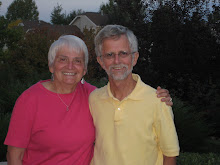 We got there about 45 minutes before the tour began so we headed into their very good Museum. Much of it was about the earliest Chinese and Japanese groups that came.
We got there about 45 minutes before the tour began so we headed into their very good Museum. Much of it was about the earliest Chinese and Japanese groups that came. This was a display about the "Picture Brides" from China. When the workers first came, only the males came but when they weren't working they spent much of their time drinking and gambling. The owners encouraged them to bring brides and family over to settle things down.
This was a display about the "Picture Brides" from China. When the workers first came, only the males came but when they weren't working they spent much of their time drinking and gambling. The owners encouraged them to bring brides and family over to settle things down.Our guide, "Jo" arrived and our group took off. First stop was the flag display with each ethnic group represented.
 Then through the time tunnel to the Sugar Cane Display.
Then through the time tunnel to the Sugar Cane Display. A more complete history is at the end of this blog, but this Village is full of replicas of many of the different buildings that existed on the Oahu Sugar Plantation from the 1900's - 1930s.
A more complete history is at the end of this blog, but this Village is full of replicas of many of the different buildings that existed on the Oahu Sugar Plantation from the 1900's - 1930s. Chinese Society Building (1909). The owners encouraged the groups to continue with their traditional lifestyle and customs. They thought this would help eliminate a lot of labor problems.
Chinese Society Building (1909). The owners encouraged the groups to continue with their traditional lifestyle and customs. They thought this would help eliminate a lot of labor problems.Chinese kitchen - baskets had been used as suitcases when they traveled to Hawaii.

 Tofu-Ya - The owners found that the Asians who ate Tofu as a staple were very hard workers. This was one of the foods they supplied for the workers. Workers made Tofu 24 hours a day.
Tofu-Ya - The owners found that the Asians who ate Tofu as a staple were very hard workers. This was one of the foods they supplied for the workers. Workers made Tofu 24 hours a day.
Japanese kitchen - item in middle of table was a saki
warmer invented by one of the workers.
 Japanese bedroom
Japanese bedroom
There were many more houses and buildings. It was very interesting. The last area we came to was the Company Store area. It had a medical clinic, Store, Camp Office and a Social/Union Hall.warmer invented by one of the workers.
 Japanese bedroom
Japanese bedroomAfter a great 2 hour tour we headed back home. We had lunch and caught up on laundry and picking up around here and then it was time to pick the boys up from their play dates. No homework tonight to it was off to the pool to burn off some more energy!

 Then back home so Colin could get his baseball uniform on for practice. One of the Mom's down the street took him and we got to have one of her daughters, Savannah.
Then back home so Colin could get his baseball uniform on for practice. One of the Mom's down the street took him and we got to have one of her daughters, Savannah. She and Ryan had a really good time! Grandpa got in a lot of reading time. Colin returned and we had a short playtime with the basketball hoop while dinner was cooking and then it was time for bed. Another great day at the Baird house!
She and Ryan had a really good time! Grandpa got in a lot of reading time. Colin returned and we had a short playtime with the basketball hoop while dinner was cooking and then it was time for bed. Another great day at the Baird house!Sugar Camp History.... Each different ethnic group that was brought to Hawaii to work in the sugar fields had their own Camp. The Hawaiian population was being ravaged by diseases brought by foreigners. The first successful sugar plantation in Hawaii got its start in Koloa, Kauai in 1835 with Chinese Immigrant groups. They signed a 3 year contract and lived in rough grass shacks. By 1885 the plantation was providing workers housing, some food, some medical care and a wage of $9 a month for men and $6 a month for women. The workers were paid using coupons or scrips which were redeemable for merchandise in the plantation store. Workers were not identified by their family name but were given shaped metal disks called "bangos" with numbers stamped on them for identification. Each ethnic group bango was a different shape and each individual had their own number. As sugar plantations expanded to other Islands because of the increased demand in America, the demand for cheap labor increased as well. Owners began looking to other countries. Portuguese from the Azores and Madeira Islands, Japanese, Peurto Ricans, Okinawans, Koreans and Filipinos were brought in. Each would have their own Camp and each group worked under a different wage scale and rate with the latest arrival being paid less.







